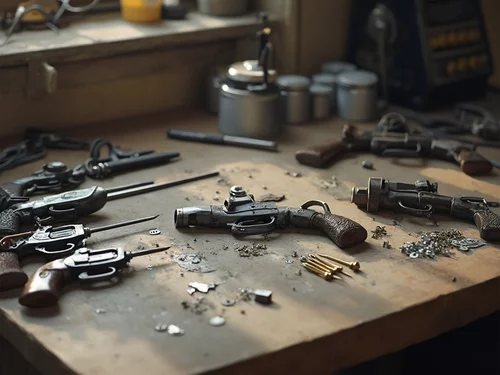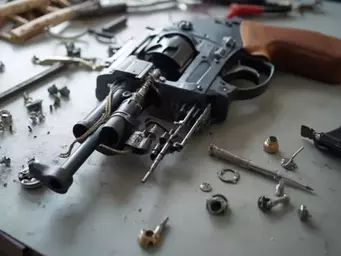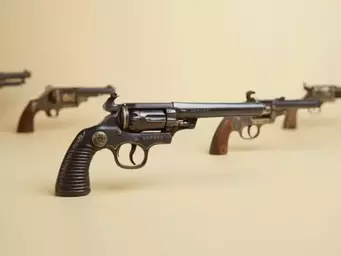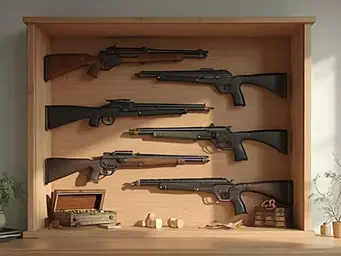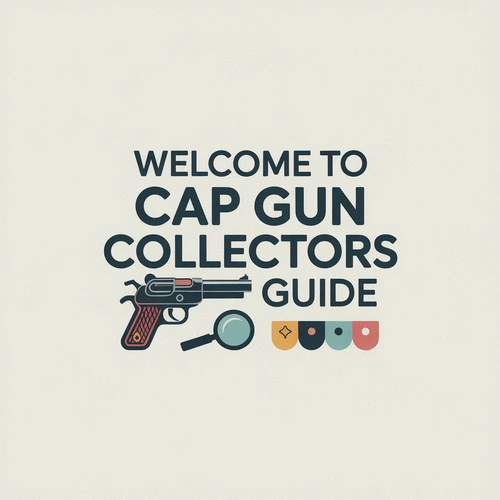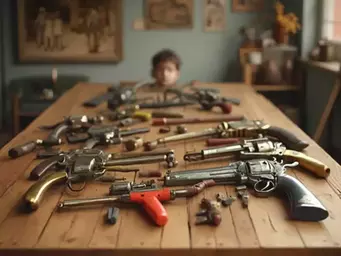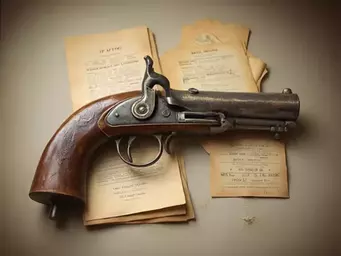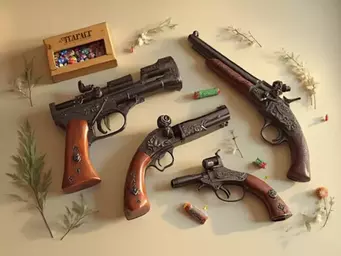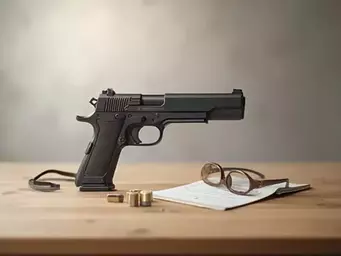Restoring cap guns is not just a hobby; it's a journey through nostalgia and craftsmanship. As you embark on this path, you'll discover not only the joy of breathing new life into vintage toys but also the rich history they embody.
What You Will Learn
- Restoration preserves the cultural legacy of vintage cap guns, ensuring their history is appreciated.
- A well-restored cap gun can significantly enhance its market value, making restoration a worthwhile investment.
- Essential tools for restoration include cleaning supplies, painting materials, and strong adhesives for repairs.
- Understanding the history of cap guns enriches your collection and deepens appreciation for their craftsmanship.
- Organizing your workspace and using quality tools will streamline the restoration process for better results.
Cap Gun Restoration: Key Components for Collectors
This visual highlights the essential aspects and benefits of cap gun restoration, categorizing them into preservation, tools, and value enhancement.
Preservation & History
- • Cultural Legacy Maintenance
- • Nostalgic Value
- • Craftsmanship Appreciation
Value & Satisfaction
- • Enhanced Market Value
- • Personal Fulfillment
- • Investment Worth
Essential Tools
- • Cleaning Supplies (brushes, mineral spirits)
- • Painting Materials (spray paints, tape)
- • Adhesives & Soldering Tools
Restoration Best Practices
- • Invest in Quality Tools (Dremel, screwdrivers)
- • Use Specific Restoration Materials
- • Organize Workspace
Understanding Cap Gun Restoration: Key Components for Collectors
As a dedicated cap gun enthusiast, I can't stress enough how restoring vintage cap guns not only preserves their rich history but also enhances their value. For collectors like us, every restoration project is more than just a task; it's an opportunity to breathe new life into these cherished pieces of nostalgia. By restoring a cap gun, we play a vital role in keeping the legacy of classic toys alive, making sure future generations can enjoy them just as we did!
Restoration matters because it allows us to appreciate the craftsmanship that went into these unique toys. Vintage cap guns, often crafted with intricate designs and robust materials, tell fascinating stories of their time. Plus, a well-restored cap gun can significantly increase its market value, making it a worthwhile investment for any collector. For insights into toy gun cap regulations, which can sometimes influence restoration practices and material choices, you can refer to resources like the Electronic Code of Federal Regulations (eCFR).
Why Restoration Matters for Collectors of Vintage Cap Guns
- Preservation of History: Restoring cap guns helps maintain the cultural legacy of these toys.
- Enhanced Value: A restored cap gun can fetch a higher price in the collector's market.
- Personal Satisfaction: There’s immense joy in reviving a piece of your childhood or family history.
Understanding the importance of restoration can significantly enhance our collecting experience. Whether you're a seasoned collector or just starting out, the value of each restored piece speaks volumes about our dedication to this hobby.
Overview of Essential Tools and Materials for Effective Restoration
Restoring cap guns requires a careful selection of tools and materials. These items not only make the process smoother but also ensure that the finished product is something we can be proud of. Here’s a brief overview of what you’ll need:
- Cleaning Supplies: Soft brushes, mineral spirits, and cotton swabs are essential for cleaning grime and dirt.
- Painting Materials: Quality spray paints and masking tape will help achieve a professional finish.
- Adhesives and Soldering Tools: Super glue and soldering irons are vital for repairing broken parts.
Having these tools on hand can make all the difference in your restoration journey. Each piece plays a crucial role in ensuring that we can restore our cap guns to their former glory, allowing us to enjoy and display them with pride.
Cap Gun History: Insights for Collectors
The history of cap guns is as colorful as the toys themselves! These iconic toys have been around for decades, capturing the imaginations of children and collectors alike. From the early models made of metal to modern plastic replicas, cap guns reflect the evolution of toy design and marketing. For a broader understanding of toy safety and regulations that have shaped toy manufacturing, including cap guns, resources like the Federal Hazardous Substances Act (FHSA) from the U.S. Consumer Product Safety Commission (CPSC) provide valuable context.
Collectors are often drawn to the nostalgic value of vintage cap guns, which remind us of simpler times filled with imaginative play. Learning about the different manufacturers and styles, along with their historical context, not only enriches our collections but also deepens our appreciation for these toys. So, let's dive into the fascinating world of cap gun history and explore what makes these pieces so special to collectors everywhere!
Engage with the Community!
As you dive into your cap gun restoration projects, consider sharing your journey with fellow enthusiasts! Join our online forum where collectors exchange tips, showcase their completed restorations, and discuss the stories behind their favorite pieces. What challenges have you faced during your restoration? What triumphs are you proud of? Your experiences could inspire others in the community!
FAQ: Cap Gun Restoration for Collectors
Bringing Your Cap Gun Restoration Project to Life
Restoring cap guns is not just about reviving old toys; it's about preserving a piece of history! To successfully bring your cap gun restoration project to life, utilizing the right tools and materials is essential. Preparation and practice will significantly enhance your restoration experience and the quality of your finished product.
As I’ve learned through my journey in cap gun collecting, taking the time to gather the necessary resources makes all the difference. Here’s a quick rundown of key components to keep in mind:
- Quality Tools: Invest in reliable tools like Dremel rotary tools and precision screwdrivers.
- Restoration Materials: Choose paints and adhesives designed specifically for toy restoration.
- Workspace Organization: Keep your tools and materials neatly arranged for easy access.
Each of these elements plays a crucial role in ensuring that your restoration goes smoothly, allowing you to focus on the fun parts—like breathing new life into your cherished cap guns.
Final Thoughts: Cultivating Your Passion for Cap Gun Collecting
Embarking on the journey of cap gun restoration is incredibly rewarding! I encourage you to dive headfirst into this hobby. The satisfaction of restoring and preserving these collectibles is unmatched, and each project teaches you something new. Remember, the stories behind these toys are just as valuable as the toys themselves!
Have you started your own cap gun restoration project? I’d love to hear your experiences and any tips you might have! Don’t hesitate to share your stories or seek further advice on cap gun restoration. Join our community at Cap Gun Collectors Guide for resources, support, and a shared love for these fantastic pieces of history!
Recap of Key Points
Here is a quick recap of the important points discussed in the article:
- Preservation of History: Restoring cap guns helps maintain the cultural legacy of these toys.
- Enhanced Value: A well-restored cap gun can significantly increase its market value.
- Essential Tools: Use quality cleaning supplies, painting materials, and adhesives for effective restoration.
- Workspace Organization: Keep your tools and materials neatly arranged for a smoother restoration process.
- Engagement with Community: Join forums or social media groups to share experiences and gain valuable tips.

